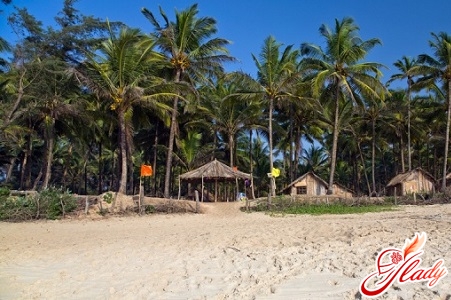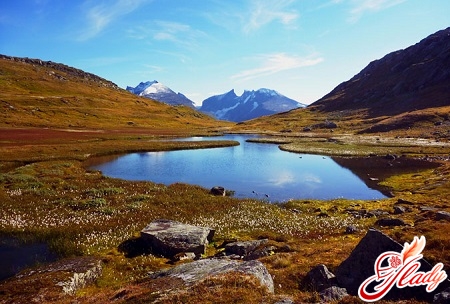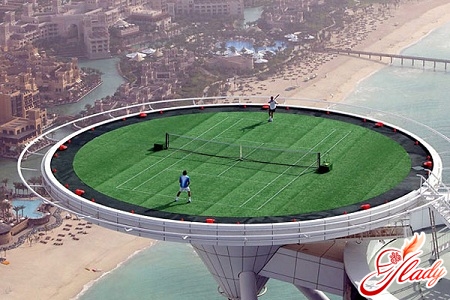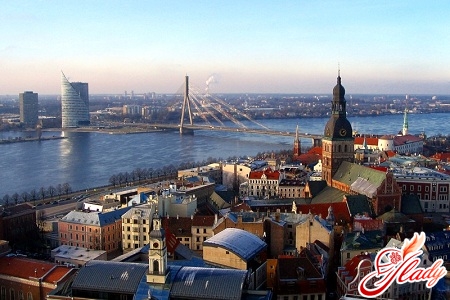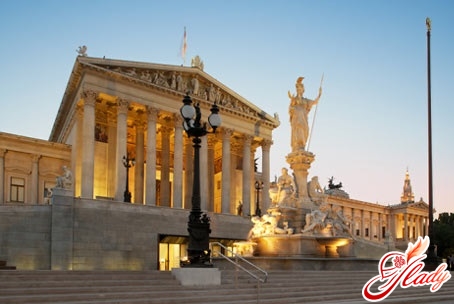
Europe has traditionally been one of the maincenters of attraction for the main flow of tourists from all over the world, including Russia. Despite the fact that there are not enough beaches and other places for passive recreation, it is small countries with a great history that attract connoisseurs of culture, art and history. One of these countries is Austria - the birthplace of such great artists as Mozart, Schubert, Haydn, Strauss and many others. This alone is enough to want to visit there and see the sights of Austria. Another inseparable feature of Austria, of course, are the Alps. Mountain resorts are ready to meet a huge number of people who want to learn to ski and those who are virtuoso skiers or snowboarders. You can choose any resort you like: secluded, crowded, youth or for older people. Experienced instructors work with a variety of age groups. So you can go to Austria with your whole family. For those travelling in Austria in the summer, mountain walks through the alpine meadows with the collection of aromatic flowers and herbs are available.
Sightseeing in Austria
To visit everything you will needa huge amount of time. Thus, in Vienna alone, in addition to museums, galleries, parks and cathedrals, there are a huge number of theaters, gardens, churches, concert halls and other architectural landmarks.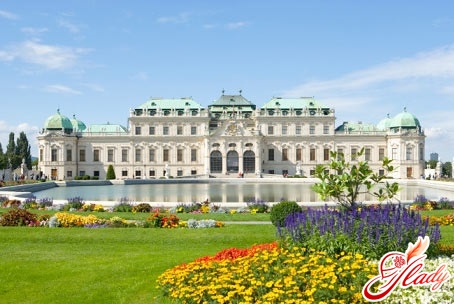
St. Stephen's Cathedral in the Austrian capital
One of the main places to visitto visit while in the capital of Austria is St. Stephen's Cathedral, named after the first Christian martyr, who was stoned to death by a crowd of people right before the eyes of St. Paul. Even during the existence of such a state as Austria-Hungary, there should not have been a single church or bell tower on its territory, the height of which would exceed the height of the South Tower of St. Stephen's Cathedral. This Catholic cathedral was first built at the beginning of the 12th century, but a century later, due to a terrible fire, the entire cathedral burned down. After that, there was a reconstruction of the building, which was consecrated already in 1263. Almost a century later, on the site where the same South Tower is currently located, the first stone was laid in the foundation of a Gothic church. The scale of the new cathedral amazed everyone. The new walls of the cathedral were built behind the old ones, so its territory became much larger. The scale of the towers on the territory of St. Stephen's Cathedral was such that the South Tower, the construction of which lasted almost 74 years, was finally completed, but the North Tower remained unfinished. But it is in it that the second largest bell in Europe is located. Only a few stained glass windows and fragments of the western facade have survived from the old cathedral. In addition to the fact that this Catholic cathedral is one of the most visited in Austria, it is a building that remembers several historical events. Thus, during one of the bombings by the Turks, a cannonball got stuck in the wall of the South Tower, which is still there. The cathedral contains symbolic burials of members of the royal Habsburg dynasty, and the funeral service for the great composer W. A. Mozart and the last emperor of Austria-Hungary, Franz Joseph, took place here. All the abbots of the monastery find their final resting place here. The Cathedral of St. Stephen is also of interest because it houses the icon of Our Lady of Pecs. According to legend, tears flowed from the eyes of the Mother of God depicted on the icon for two weeks. This event took place during the war with Turkey. The observation deck located on the territory of the cathedral offers a stunning view of the city. During the Great Patriotic War, the cathedral courageously resisted all sorts of attacks, including when the city commandant ordered the destruction of the city center. Marauders then set fire to the shops and stores they had plundered. The fire spread to the cathedral. Because of this, the roof collapsed, and the largest bell Pummerin fell and fell into the North Tower. The interiors were also destroyed, including the large romantic organ. In the post-war period, the cathedral was restored by volunteers, and by 1948 the roof was restored. Restoration work is still being carried out to this day. A variety of tools are used for this, including tools from the Middle Ages and modern computer technology. In place of the organ destroyed in a fire in 1960, a new giant organ was installed here, the largest in the country. It has 125 registers, 10 thousand pipes and 4 rows of keyboards with pedals.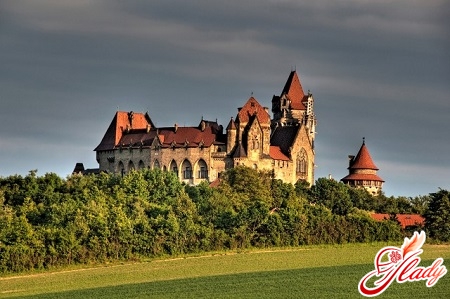
Memorial Church in honor of the Empress Elizabeth
Known to the world as Princess Sissi,Empress Elisabeth of Bavaria became one of the most beloved representatives of the imperial family by the people of Austria-Hungary. Many members of this family, as well as courtiers, disliked the empress. This is what forced Elisabeth to travel, to spend a lot of time away from her family, from the palace. Emperor Franz Joseph was very sensitive to his wife, and this largely explains the fact that a memorial church was built in Austria, which is one of the highest in the mountains. The church was built in 1901 in memory of Empress Elisabeth. It is located on Mount Schneeberg. It is very difficult to get there, since it is erected at an altitude of almost 2 km above sea level. The only starting point from which you can get here by transport is the city of Puchberg am Schneeberg. From here, a train departs on a special cogwheel railway.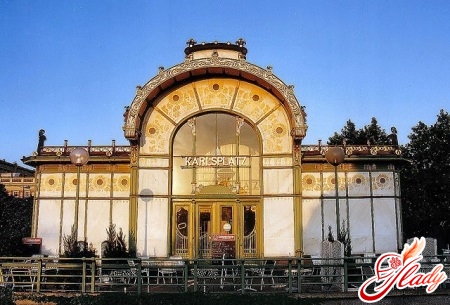
The largest open concert venue in the world
Home to some of the greatest figures in the world of music,Austria could not give up the palm for the largest open-air concert venue. The Bregenz Sea Stage is located right on the waters of Lake Constance. It was first built after the Second World War, in 1946. The first production that took place here was dedicated to W. A. Mozart, one of his early operas was staged here. After some time, it was decided to rebuild the stage and expand the auditorium, as the number of people wishing to visit this place was constantly increasing. In the middle of the 20th century, there was enough space for 6 thousand spectators, but in the 80s another reconstruction was carried out and the number of spectator seats was reduced. Each production is unique not only because it is created in special conditions, with an atmosphere different from other halls, but also because each new opera opens up here from a different side to the spectators. In addition, special, unique decorations are built for each production. At different times, the Bregenz stage has hosted Verdi's Aida, Puccini's Tosca and other masterpieces of world music. Only here can you see couples who come here in evening dresses with diamonds and hats. But at the same time, they can easily take a ride on catamarans to while away the time before the opera. By the way, getting to the performance is not that easy. Tickets, the number of which is limited to a small number of seats in the "hall", are sold out almost instantly. As a result, a stunning picture opens up on the shore of the lake, exciting the minds and imagination of even the most experienced opera connoisseurs. Here, you cannot leave your mobile phone on, or open umbrellas. The second condition is very important for a country like Austria, because rain is not uncommon here. As soon as it starts to rain, the performance is interrupted. But it should be noted that if the rain stopped the opera during the first act, then your ticket will be valid the next day. If the second act has already begun, then all the organizers' obligations to the audience are considered fulfilled. But even this does not become an obstacle for true music lovers; this city is visited by crowds of music lovers.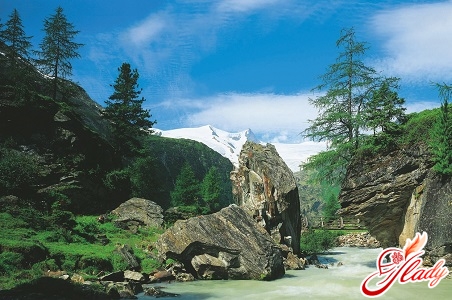
Railway to the Alps - Semmering
Surrounded by the most impressivemountain ranges and peaks in Europe, Austria has repeatedly tried to create a convenient form of transport that would allow one to reach a remote region separated from the central region by mountain ranges without much difficulty. The most successful project of those proposed is the Semmering railway. Opened in the mid-19th century, it was the first whose route was laid through a mountain range. Since then, not only the ways of traveling around Austria, but also its appearance have changed significantly. And if earlier, in order to get to the port of Trieste from Vienna, it was necessary to look for bypass routes, then after the commissioning of the road, this could be done much faster and more comfortably. And this route did not have a special flow of tourists. But the event allowed a large number of not only local residents, but also tourists to admire the landscapes of the Alps and their meadows from the window of a locomotive and other attractions of Austria. By the way, it was an ordinary steam locomotive that was chosen as a means of transport. Neither the project administration nor other voters wanted to accept anything new. Although a little later, engineers did think about creating more powerful steam locomotives. The best locomotives were created by engineer V. Engert. His creations began to run on many other railways in the country. Now some of them are used to organize tourist retro trips. The construction of the railway required a huge amount of time, money and, of course, labor. About 20,000 workers were involved in this event. During the construction, more than a hundred new bridges, 16 viaducts were built on the railway, 14 tunnels were cut. There was no waste during construction, and all the stones cut out of the tunnels were later used to build stations and administrative buildings.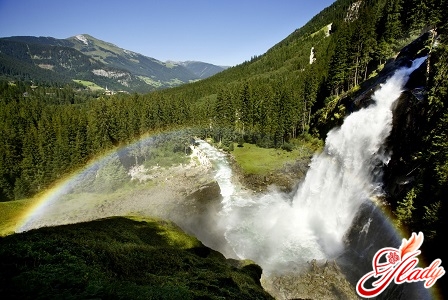
House museums in the Austrian capital
Vienna is filled with numerous museums, includingincluding house museums. They were created in the places of residence of such famous personalities as J. Haydn, W. Mozart, J. Strauss, L. Beethoven, Z. Freud and many others. House Museum of W. A. Mozart W. A. Mozart spent quite a few years in Vienna. During this time, he changed more than a dozen apartments. But he spent the longest period of his Viennese life at the address: Domgasse, house 5. The apartment on the 2nd floor consisted of 4 rooms, 2 studies, a kitchen. This house museum is also called the "House of Figaro", since it was here that the opera "The Marriage of Figaro" was written. The reconstruction of the building took place several years ago (in 2006), and now it houses a huge exhibition, which now occupies all 3 floors of the house. Exhibitions and excursions are held to the melodies from the opera "The Marriage of Figaro". Sigmund Freud House Museum The famous psychoanalyst lived in Vienna with his family for 47 years. And now in the house No. 19 on Berggasse, where he also received his clients and was engaged in science, there is a museum. Here, in addition to living and working rooms, you can look at and study a little the largest library dedicated to psychoanalysis. It has 35 thousand copies. As a result of the persecution of citizens of Jewish origin, Sigmund Freud's family was forced to go to London in 1938. Along with them, numerous household items and professional activities of the psychoanalyst were transported. Therefore, in Austria you will not see the famous couch on which Freud's clients lay during a psychoanalysis session. A special place in the museum is given to the waiting room, which was a small room in which visitors to Freud's apartment waited for their turn. Beethoven House Museum in Baden This museum is one of the most interesting places to visit among travelers. Ludwig van Beethoven visited Baden very often, not only to improve his health and get rid of the depression that had overwhelmed him, but also to write some of his works. It was here, in the house at 10 Rathausgasse, that the Ninth Symphony was completed and here the composer wrote the Solemn Mass. In the apartment you can see the piano on which the composer played music, a bed, photographs, porcelain accessories and reproductions of his musical works.




